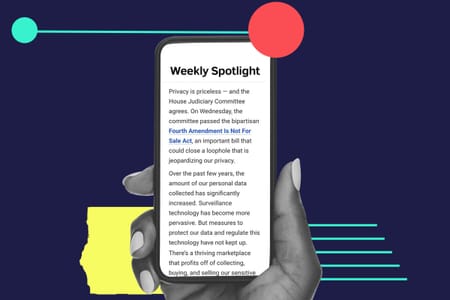This piece originally appeared on Axios.
The expanded use of facial recognition by law enforcement agencies poses significant risks, from misidentifications and unlawful targeting to the danger of disclosing sensitive information about people's daily lives.
What's happening: There are few legal constraints on the use of facial recognition. Both federal and state lawmakers are trying to address the technology's risks while responding to pressure from law enforcement and from big tech companies like Amazon and Microsoft.
The technology presents a variety of risks:
- It threatens to end anonymity, a right critical to common sensitive activities and recognized by the Supreme Court as a key First Amendment shield. In China, a facial recognition surveillance dragnet can quickly track down individuals in cities of millions. U.S. networks are not far behind.
- It could endanger public safety. One study of real-time facial recognition found misidentifications were 10 times more frequent than proper identifications, and MIT research has revealed high error rates for women and people of color. Without proper checks, a computer error could lead officers to arrest or use force against innocent individuals.
- It could limit free exercise of protected rights. Baltimore police used facial recognition to disrupt a lawful protest by identifying and arresting anyone with an outstanding warrant. An FBI presentation includes the use of facial recognition to identify attendees at political rallies.
Where it stands: Pre-identified photos of half the U.S. adult population are searchable in law enforcement databases.
What's needed: Limiting the use of facial recognition to serious crimes and requiring police to secure a judge's permission to use the technology, based on probable cause, could both lower the risk of abuse.
- Approval might be granted to identify a suspect committing a crime on a security camera, for example, but not to build a database of attendees at a political event.
Between the lines: Facial recognition systems fall in largely uncharted legal territory, though the Supreme Court did extend Fourth Amendment rights to public areas last year.
- Washington state is considering competing bills to regulate facial recognition.
- The debate could soon return to Congress, which has been weighing greater oversight of the technology.
- The other side: Microsoft and Amazon’s calls for law enforcement limits on facial recognition have not stopped them from lobbying against Washington state's bill with stronger limits, and they are likely to lobby against federal limits as well.
Go deeper: Read the Project on Government Oversight's task force report, "Facing the Future of Surveillance."



